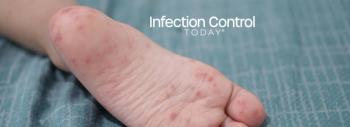
Paper Asks, Can HIV be Transmitted Via Manicure Instruments?
The Centers for Disease Control and Prevention (CDC) lists numerous potential alternative sources of HIV transmission in addition to the known classical modes for acquiring the AIDS virus. Although manicure instruments is not on this list of alternative sources, a case of HIV transmission that may be linked to sharing of manicure instruments is presented in AIDS Research and Human Retroviruses, a peer-reviewed journal from Mary Ann Liebert, Inc., publishers. The article appears in special issue on HIV Prevention Science and is available free on the AIDS Research and Human Retroviruses website at
In the article "An HIV-1 Transmission Case Possibly Associated with Manicure Care," Elaine Monteiro Matsuda and coauthors from Santo André AIDS Program, Adolfo Lutz Institute, and University of São Paulo, Brazil, describe the case of a 22-year-old woman who had advanced HIV infection but no apparent risk factors for acquiring HIV. She reported having shared manicure instruments years before with a cousin who was later found to be HIV-positive. Genetic analysis of the viruses from both patients suggests that they shared a common viral ancestor, indicating the possibility that HIV was transmitted via the manicure instruments.
"HIV is not transmitted by casual contact, such as sharing eating utensils, or drinking from the same water glass," says AIDS Research and Human Retroviruses basic sciences editor Brian Foley, PhD, of the HIV Sequence Database at Los Alamos National Laborator. "This transmission of HIV by shared manicure equipment is a very rare event that should serve not to make people fear HIV or contact with HIV-infected people. It should make people aware that sharing any utensils with possible blood-blood contact, such as needles used for drugs, tattoos, or acupuncture can result in transmission of viruses such as hepatitis C (HCV) and HIV. In addition, there are other common viruses and bacteria that can also be spread by sharing equipment without proper disinfection between users."
Source: Mary Ann Liebert, Inc.
Newsletter
Stay prepared and protected with Infection Control Today's newsletter, delivering essential updates, best practices, and expert insights for infection preventionists.






